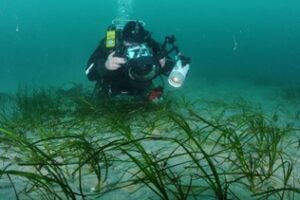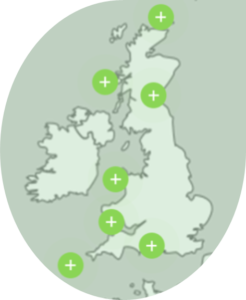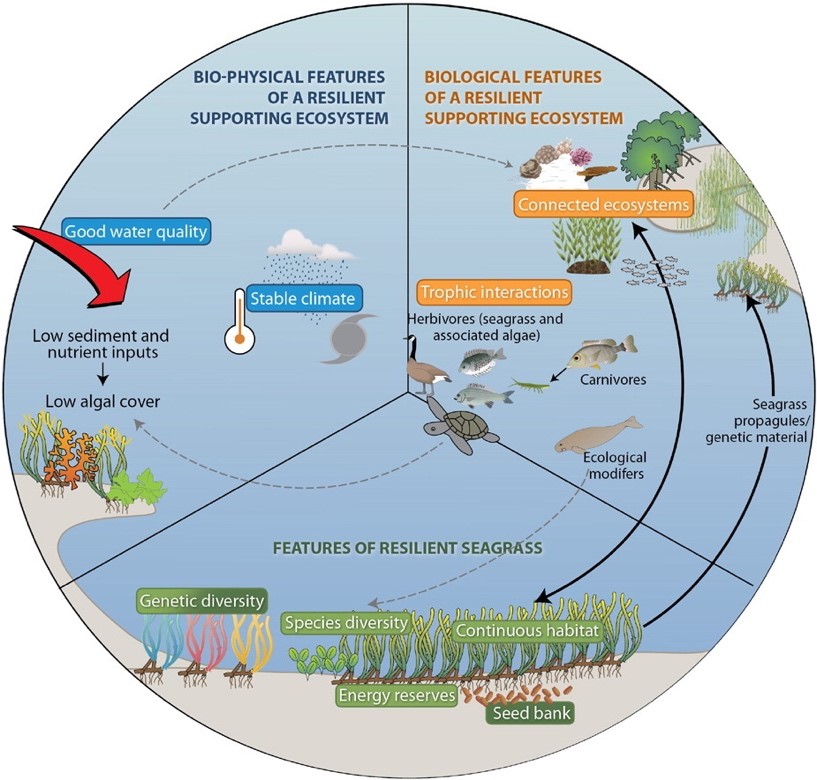Seagrasses in a Changing Climate: their Role, Resilience and Restoration Potential in Ireland

Seagrasses have gained increasing attention over the last decade as a blue carbon habitat (1, 2). Their long leaves temporarily trap carbon through a process called photosynthesis, but it is their ability to drive carbon accumulation in the sediment that makes them a powerful blue carbon ecosystem. As their flowing fronds dampen the wave energy, particulate organic carbon drops out of the water column and is locked away in the soil of the meadows for centuries to millennia.

Globally we have lost 29% of our seagrass meadows since 1879, with the rate of loss per year
accelerating rapidly (3). A more recent evaluation of seagrass distribution in the UK estimates habitat loss could be as high as 92% (4). This has triggered remarkable restoration efforts in the United States, Europe, and, more recently, the UK.
While some restoration projects have found success on a small scale, the challenge they now face is growing their operations to achieve seascape-scale restoration success. This necessitates a deep understanding of the plant species’ resilience and its supporting ecosystem. In other words, it is not about the number of seeds planted today, but how many will be there in 50 years’ time.

My research will interrogate the resilience of Ireland’s Zostera beds, attempting to answer the following questions:
- How has the areal extent of Zostera beds changed over time?
- To what extent are anthropogenic influences (e.g., elevated nutrient inputs, mooring scars, trampling) affecting Zostera health?
- What is the genetic diversity and adaptive potential across Zostera beds?
- To what extent are Ireland’s Zostera beds an important carbon store?
- Are current conservation management measures effective, and what beds should be prioritised for restoration?
Follow me on Twitter to keep up to date with seagrass in Ireland 🌱🌊
@Heidi_McIlvenny
References
- D. Laffoley, G. Grimsditch, “The Management of Natural Coastal Carbon Sinks,” (IUCN, Gland, Switzerland, 2009).
- C. Nellemann et al., Blue carbon: the role of healthy oceans in binding carbon: a rapid response assessment. (UNEP/Earthprint, 2009).
- M. Waycott et al., Accelerating loss of seagrasses across the globe threatens coastal ecosystems. Proc Natl Acad Sci U S A 106, 12377-12381 (2009).
- A. E. Green, R. K. F. Unsworth, M. A. Chadwick, P. J. S. Jones, Historical Analysis Exposes Catastrophic Seagrass Loss for the United Kingdom. Frontiers in Plant Science 12, 15 (2021).
- R. K. F. Unsworth, C. J. Collier, M. Waycott, L. J. McKenzie, L. C. Cullen-Unsworth, A framework for the resilience of seagrass ecosystems. Marine Pollution Bulletin 100, 34-46 (2015).





















































